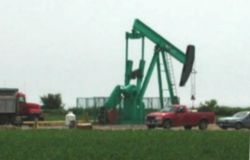A bit of a current news event for today’s post
The UK is currently experiencing a bit of turmoil with potentially contaminated petrol being sold in certain petrol stations
So far, it has mostly been reported as being sold by Supermarket Chains Tesco and Morrisons though it has been all across the country:

So what is it?
The latest investigations are suggesting that the petrol is contaminated with Silicon which is causing damage to the oxygen sensor. The sensor measures the amount of oxygen in exhaust gas, and once damaged it means that the ECU (the computer in the engine) no longer knows how much oxygen is present so goes into a kind of shut down mode.
I’m told that because of this there is a huge shortage in the UK of oxygen sensors in garages. The repair costs roughly £200 and there are likely to be many car owners suing those responsible.
Interestingly, when I heard what the problem was my first reaction was different from what others are suggesting. “Experts” are mostly talking about variations in petrol composition and contamination during transport.
My first thoughts were in the process of producing petrol.
So, I thought I’d do a little Chemistry lesson in how you convert crude oil into petrol:
(Images all from Wikipedia)
In the olden days, after digging your oil out of the ground:

You heated it in an industry version of a fractionating column:

Each component in crude oil has a different point which it can be distilled off so you can split it into fuel gas, LPG, petrol, light cycle oils used in diesel and jet fuel, and heavy fuel oil.
The problem is that the biggest earners of all of these are found in the smaller quantities in crude oil, so in the late 19th Century they developed Cracking
Let me summarise:
The simplest of these processes is Thermolytic Cracking – also known as Pyrolysis.
The process enables you to convert the heavier fuel oils into lighter fuels such as LPG, petrol and diesel which are in greater demand
In 1936, the first commercial Thermal Cracking refinery was set up to get more out of crude oil.
Essentially you heat at temperatures up to 1000 degrees C and high Pressure (~700kPa) in absence of Oxygen, and the heavier components of oil are released leaving the lighter ones available for extraction.
The process contains many reactions many relying on free radicals – more details in the article
By 1942, the process had been refined and named Fluid Catalytic Cracking. The advantage of this is you get a higher octane rating at a lower temperature and without need of exerting high pressure. It uses a Zeolite Catalyst (A catalyst is a substance that speeds up a reactions and remains unchanged at the end). Zeolites are Aluminium-Silicon based materials, often containing Sodium, and used as Molecular sieves due to their structure:

Sometimes they will also use Silicon (IV) Dioxide
It is here where I think it is possible that the contamination could take place
Just my 2 English pence, but it seems more feasible than some form of contamination during storage – I just can’t buy that when there’s so much Silicon being used in the manufacture
